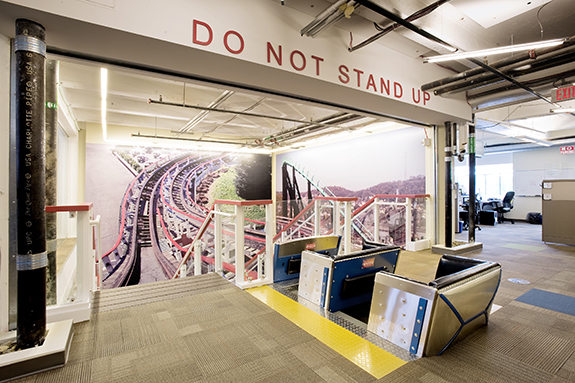Story is important in architecture. It is seen in how a new building continues the story of an existing place. It is used verbally to convey how a design was developed. And it is experienced as one moves through the resulting spaces of a project. Story is everywhere, whether we are aware of it or not. When harnessed, it can be a powerful tool for architects.
In general, our firm makes a conscious effort to think about the story of our architectural designs. Since we are a multidisciplinary firm, I thought it might be a fun experiment to look at some other guidelines for storytelling and see what we can learn from them. One list that I particularly like is “Pixar’s 22 Storytelling Guidelines.” Although this list is tailored toward the film industry, the list offers a few points that I personally want to remember.
#22. What’s the essence of your story? Build out from there. To me, this tip reminds us to return to home base in the midst of making all the logical adjustments. I’ve found it easy to lose track of the concepts of a design while taking care of the little pieces that need to be solved. Presentations too can get lost in describing minor adjustments. And we should also take care to remember the essence of a project when we present as well.

#4. “Once upon a time there was ____. Every day, _____. One day ______. Because of that, _______. Because of that, _______. Until finally_______. Every story in the world can be boiled down to this formula. Pick any movie and try it out for yourself. For a presentation, this format could help us illustrate how we got from point A to point B. But for design, it could also be a helpful tactic to break down the important parts and identify what the story is as one moves through the space we create.
#5. Simplify. Focus. Combine characters. In terms of movies, it makes sense not to have too many characters to keep track of. In architecture, this could mean limiting the themes in our designs, or limiting points in a discussion with clients.
#2. Keep in mind what is important to the audience. What is fun to the writer and to the audience can be very different. This tip is mostly self-explanatory. The nature of our job as designers dictates that we consider what is important to the end user. However, I still think it’s good to remember that our interests might not align with what is most important to the project.
#9. When you’re stuck make a list of what won’t happen next. I’ve never done this during the design process, but it seems like it could be a helpful way to get out of a jam.
After contemplating all of Pixar’s Storytelling Guidelines, I realized that there are specific differences in the roles of storyteller and architect. While authors have the freedom to control and change all aspects of their stories, we as architects and designers continue a true story begun by others that is told through history. Designers are one part of a team effort and only actively control a piece of the story. But while these guidelines might be most applicable for authors and film writers, we too can gain from learning how others tell a good story.

These are just a few of the tips that were mentioned. But feel free to read the complete list here. Maybe you’ll find more tips and pointers that apply specifically to your work..
